An easy, fun and cheap project to do at this time of year is to set up a tree nursery. In Ireland, we have many native trees to plant seeds from. An added bonus at the completion of this project is that any surplus trees can be sold at one of your school fundraiser days to raise money for the next garden project.

Autumn is a great time to bring children out for a nature walk in search of seeds such as acorns and conkers. \ Ciara O'Donnell Photography
Collection of seeds
Autumn is a great time to bring children out for a nature walk in search of seeds such as acorns and conkers. Children also love to gather leaves to do leaf rubbings when back in class. Tree seeds to try:
Horse chestnut seeds – conkers. Sycamore seeds – helicoptersAsh seeds – keys.Oak seeds – acorns (do the float test before you use the acorns).Float Test
Before sowing acorns, it’s best to do the float test. Here’s how: Remove the cups of the acorns and drop the seed into a bowl of water. If the seed floats, it needs to be discarded.
Seeds: Once the seeds have been collected, the next job is to separate each variety of seed and pop them into a container or box. Mix in some leaves and leaf mould (this can be found at the bottom of large trees) until the nursery bed is prepared. You can get older children to make labels noting the seed variety, date of collection and location of where it was found. Labels can be in English or Irish.
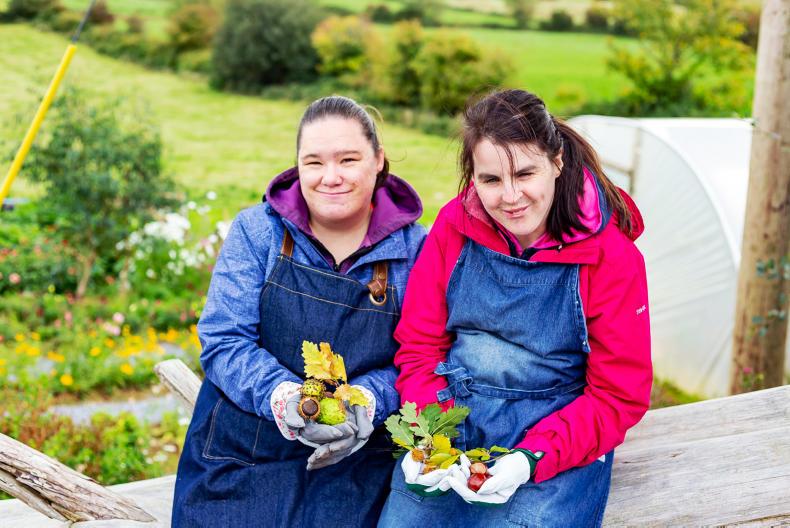
Kerry Social Farming participants Ciara Corridon and Vanessa Meehan collecting conkers for the tree nursery project. \ Ciara O'Donnell Photography
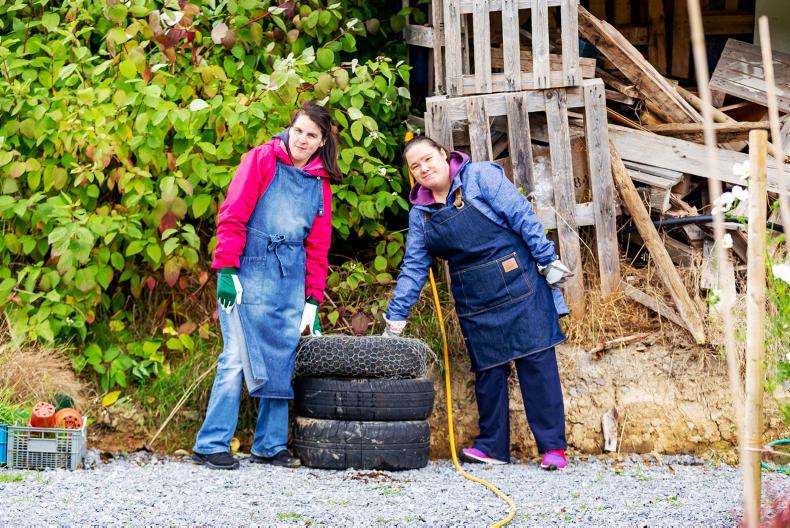
Kerry Social Farming participants Vanessa Meehan and Ciara Corridon preparing the leaf mould mix. \ Ciara O'Donnell Photography
Project: The nursery bed
1 Build a raised bed or use a raised bed that you already have in the school garden. It should be located in a cool, shaded area. 1m x 2m is an ideal size. Dig over the soil, this will be the underneath layer of the tree nursery. Tumble the autumn leaves you gathered and as much leaf mould as you can find. This creates the top layer.
2 Plant seeds in rows 8-10cm apart. Don’t forget to label these. Remember that larger seeds will need more space.
3 Cover the seeds with some more loose leaves, this keeps the bed moist. Lay a sheet of wire mesh on top to prevent birds/animals helping themselves to your seeds.
4 The Year Round Organic Garden by Lucy Bell, Niamh Ní Dhúill and Áine Ní Fhlaharta recommends using 50mm x 50mm wood for the frame and fine wire mesh from your local hardware shop. (Maybe even ask them to sponsor this project.)
5 Tack the wire mesh onto the timber to create a protective cover for the nursery bed and be sure to keep the bed from drying out. This task can be added onto weekly chores for garden club members.
6 This time next year, you will have the pleasure of digging out and transplanting your young tree seedlings either into a bed 30mm apart or pots, which can be made from recycled milk and juice cartons that biodegrade into the ground.
7 Always remember to keep young trees well watered and don’t allow weeds to grow around them. Consider layering a piece of damp cardboard around the base of the trees to keep the weeds down.
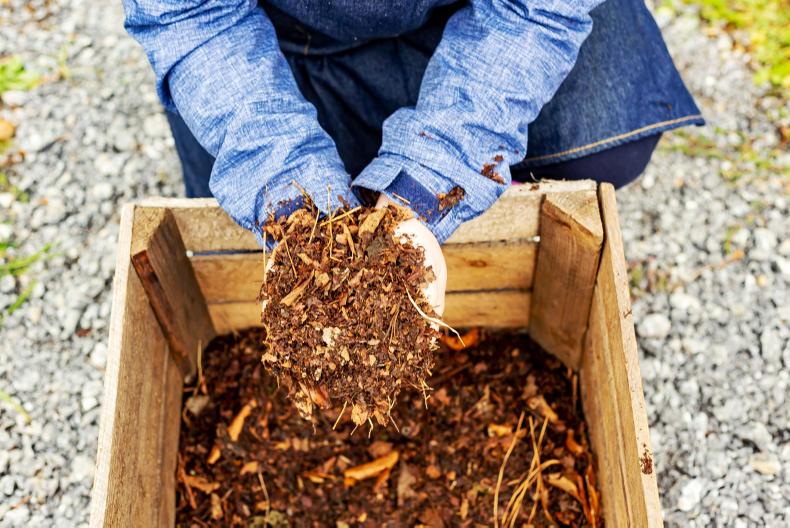
Creating a leaf mould mix. \ Ciara O'Donnell Photography
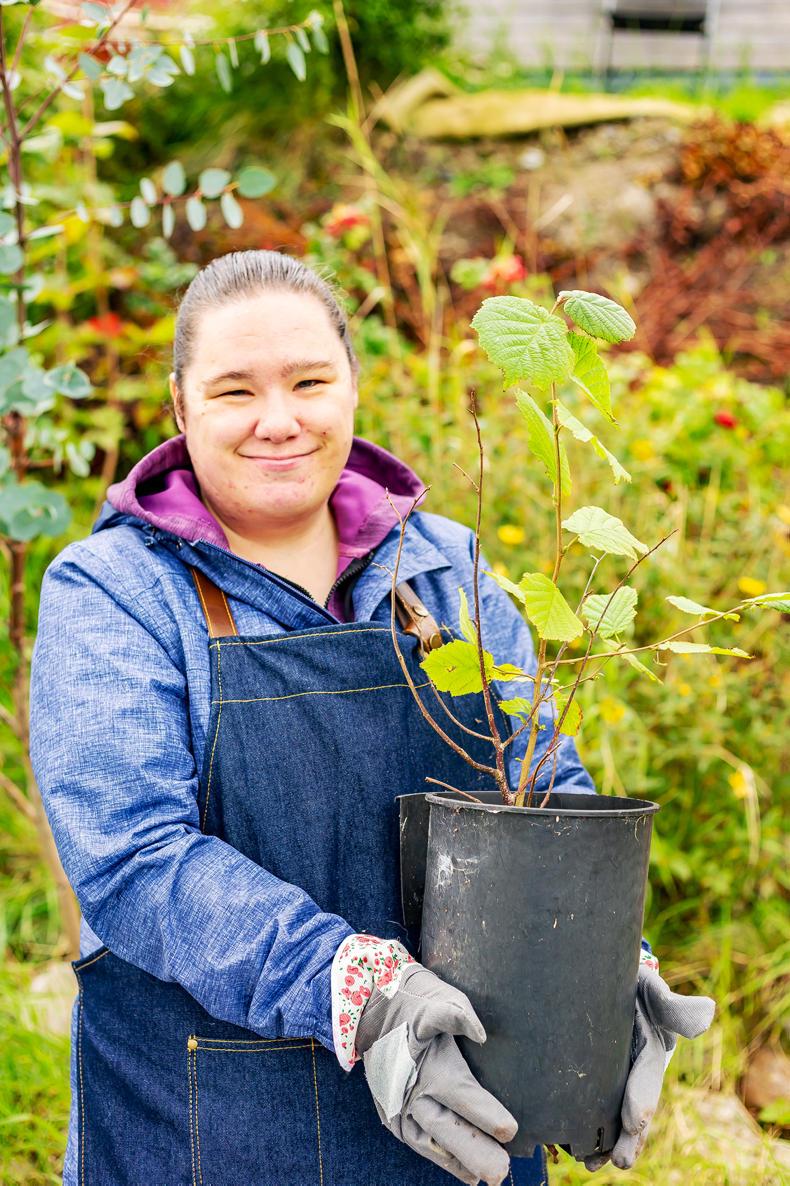
Kerry Social Farming participant Ciara Corridon helping Maura Sheehy with the tree nursery project. \ Ciara O'Donnell Photography
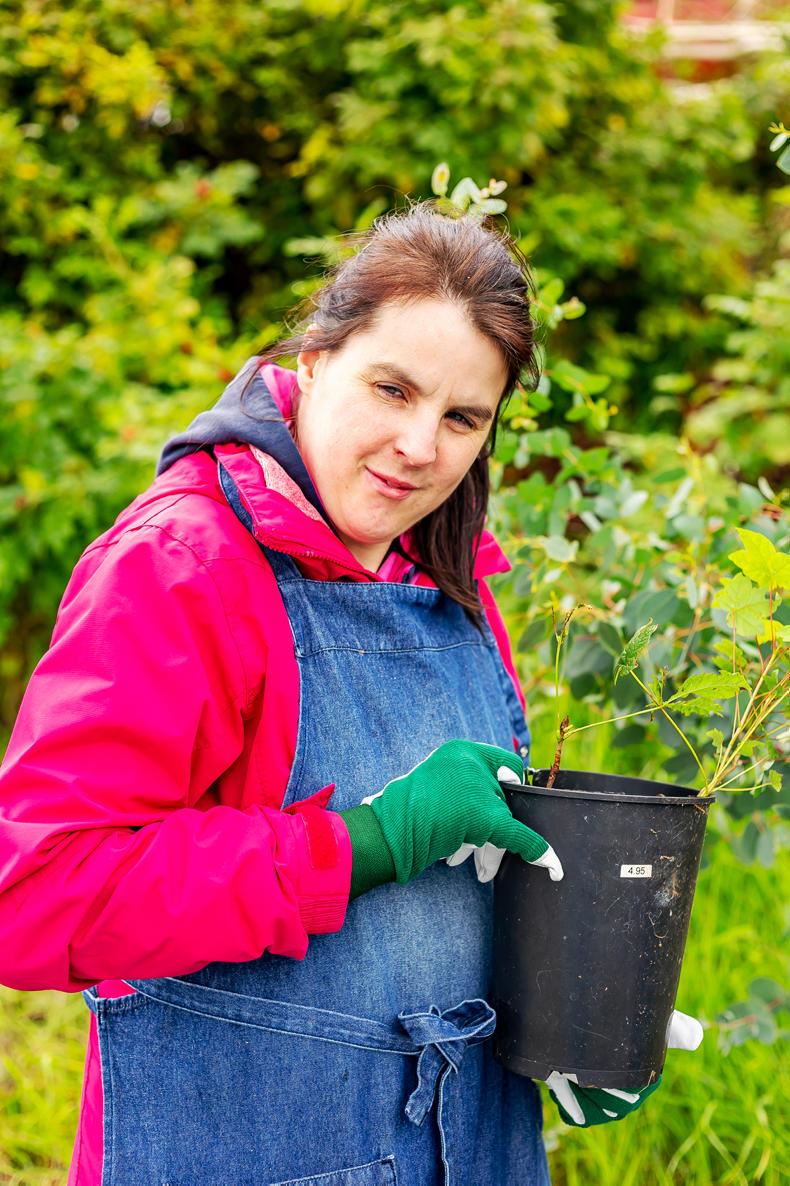
Kerry Social Farming participant Vanessa Meehan assisting Maura Sheehy with the tree nursery project. \ Ciara O'Donnell Photography
Project: leaf mould mix
By far the easiest type of compost to make is this leaf mould mix. It is a rich brown/black material and is sweet smelling. It has several uses, such as: seed compost mix, invaluable soil improver/conditioner and it helps prevent growth of weeds and to retain moisture.
1 Gather leaves that have fallen to the ground or from the forest floor. The best time to do this is after a rain shower as they need to be damp.
2 You can store the leaves in the following:
Plastic bags with air holes. Simply fill the bags, tie them, pierce a few air holes and store under a hedge.Tyres. Stack three old tyres and fill with the leaves, put a piece of wire mesh/chicken wire on top to cover them.Purpose-built wire mesh enclosure. Made with wooden posts and wire mesh similar to a pallet compost heap.3 Composting process: Fungi will break down the leaves over time, it can be a slow process and some tougher leaves can even take up to two to three years to rot down completely. Beech leaves are known as the quickest leaves to break down and also produce some of the best leaf mould.
Maura Sheehy is a flower farmer and florist who runs Maura’s Cottage Flowers near Tralee, Co Kerry. Maura specialises in growing and supplying natural and unique arrangements for weddings, funerals, special occasions and for local businesses, as well as running regular flower-arranging classes at her studio and school garden projects. For further information, call 087 061 2622 or visit www.maurascottageflowers.com.
An easy, fun and cheap project to do at this time of year is to set up a tree nursery. In Ireland, we have many native trees to plant seeds from. An added bonus at the completion of this project is that any surplus trees can be sold at one of your school fundraiser days to raise money for the next garden project.

Autumn is a great time to bring children out for a nature walk in search of seeds such as acorns and conkers. \ Ciara O'Donnell Photography
Collection of seeds
Autumn is a great time to bring children out for a nature walk in search of seeds such as acorns and conkers. Children also love to gather leaves to do leaf rubbings when back in class. Tree seeds to try:
Horse chestnut seeds – conkers. Sycamore seeds – helicoptersAsh seeds – keys.Oak seeds – acorns (do the float test before you use the acorns).Float Test
Before sowing acorns, it’s best to do the float test. Here’s how: Remove the cups of the acorns and drop the seed into a bowl of water. If the seed floats, it needs to be discarded.
Seeds: Once the seeds have been collected, the next job is to separate each variety of seed and pop them into a container or box. Mix in some leaves and leaf mould (this can be found at the bottom of large trees) until the nursery bed is prepared. You can get older children to make labels noting the seed variety, date of collection and location of where it was found. Labels can be in English or Irish.

Kerry Social Farming participants Ciara Corridon and Vanessa Meehan collecting conkers for the tree nursery project. \ Ciara O'Donnell Photography

Kerry Social Farming participants Vanessa Meehan and Ciara Corridon preparing the leaf mould mix. \ Ciara O'Donnell Photography
Project: The nursery bed
1 Build a raised bed or use a raised bed that you already have in the school garden. It should be located in a cool, shaded area. 1m x 2m is an ideal size. Dig over the soil, this will be the underneath layer of the tree nursery. Tumble the autumn leaves you gathered and as much leaf mould as you can find. This creates the top layer.
2 Plant seeds in rows 8-10cm apart. Don’t forget to label these. Remember that larger seeds will need more space.
3 Cover the seeds with some more loose leaves, this keeps the bed moist. Lay a sheet of wire mesh on top to prevent birds/animals helping themselves to your seeds.
4 The Year Round Organic Garden by Lucy Bell, Niamh Ní Dhúill and Áine Ní Fhlaharta recommends using 50mm x 50mm wood for the frame and fine wire mesh from your local hardware shop. (Maybe even ask them to sponsor this project.)
5 Tack the wire mesh onto the timber to create a protective cover for the nursery bed and be sure to keep the bed from drying out. This task can be added onto weekly chores for garden club members.
6 This time next year, you will have the pleasure of digging out and transplanting your young tree seedlings either into a bed 30mm apart or pots, which can be made from recycled milk and juice cartons that biodegrade into the ground.
7 Always remember to keep young trees well watered and don’t allow weeds to grow around them. Consider layering a piece of damp cardboard around the base of the trees to keep the weeds down.

Creating a leaf mould mix. \ Ciara O'Donnell Photography

Kerry Social Farming participant Ciara Corridon helping Maura Sheehy with the tree nursery project. \ Ciara O'Donnell Photography

Kerry Social Farming participant Vanessa Meehan assisting Maura Sheehy with the tree nursery project. \ Ciara O'Donnell Photography
Project: leaf mould mix
By far the easiest type of compost to make is this leaf mould mix. It is a rich brown/black material and is sweet smelling. It has several uses, such as: seed compost mix, invaluable soil improver/conditioner and it helps prevent growth of weeds and to retain moisture.
1 Gather leaves that have fallen to the ground or from the forest floor. The best time to do this is after a rain shower as they need to be damp.
2 You can store the leaves in the following:
Plastic bags with air holes. Simply fill the bags, tie them, pierce a few air holes and store under a hedge.Tyres. Stack three old tyres and fill with the leaves, put a piece of wire mesh/chicken wire on top to cover them.Purpose-built wire mesh enclosure. Made with wooden posts and wire mesh similar to a pallet compost heap.3 Composting process: Fungi will break down the leaves over time, it can be a slow process and some tougher leaves can even take up to two to three years to rot down completely. Beech leaves are known as the quickest leaves to break down and also produce some of the best leaf mould.
Maura Sheehy is a flower farmer and florist who runs Maura’s Cottage Flowers near Tralee, Co Kerry. Maura specialises in growing and supplying natural and unique arrangements for weddings, funerals, special occasions and for local businesses, as well as running regular flower-arranging classes at her studio and school garden projects. For further information, call 087 061 2622 or visit www.maurascottageflowers.com.







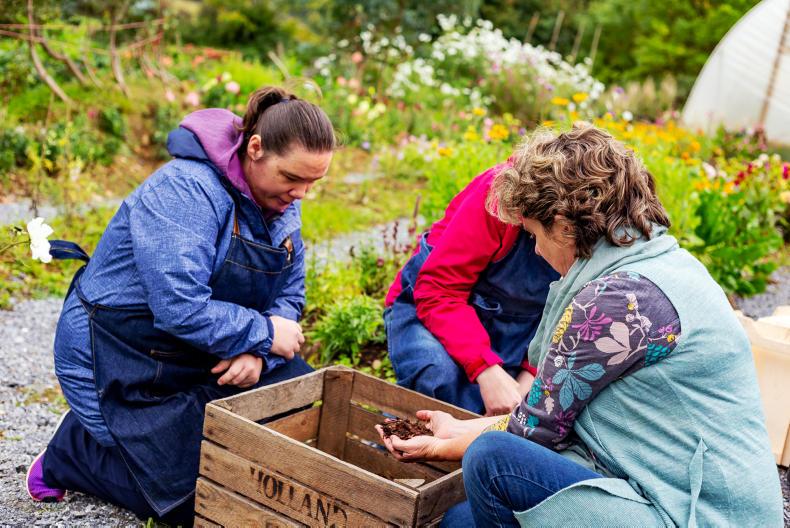




 This is a subscriber-only article
This is a subscriber-only article









SHARING OPTIONS: